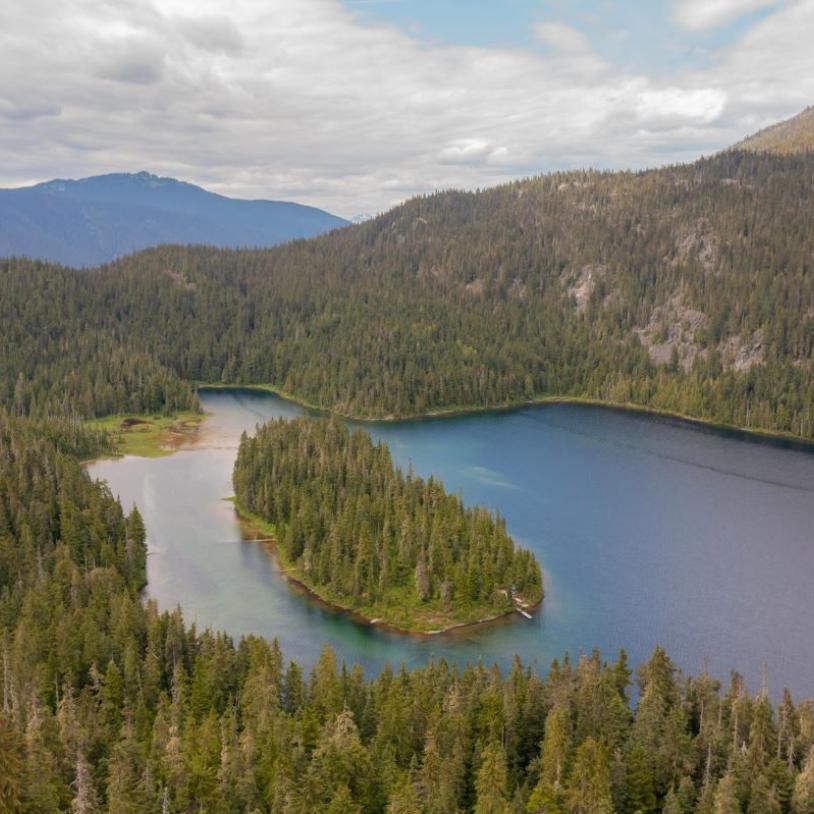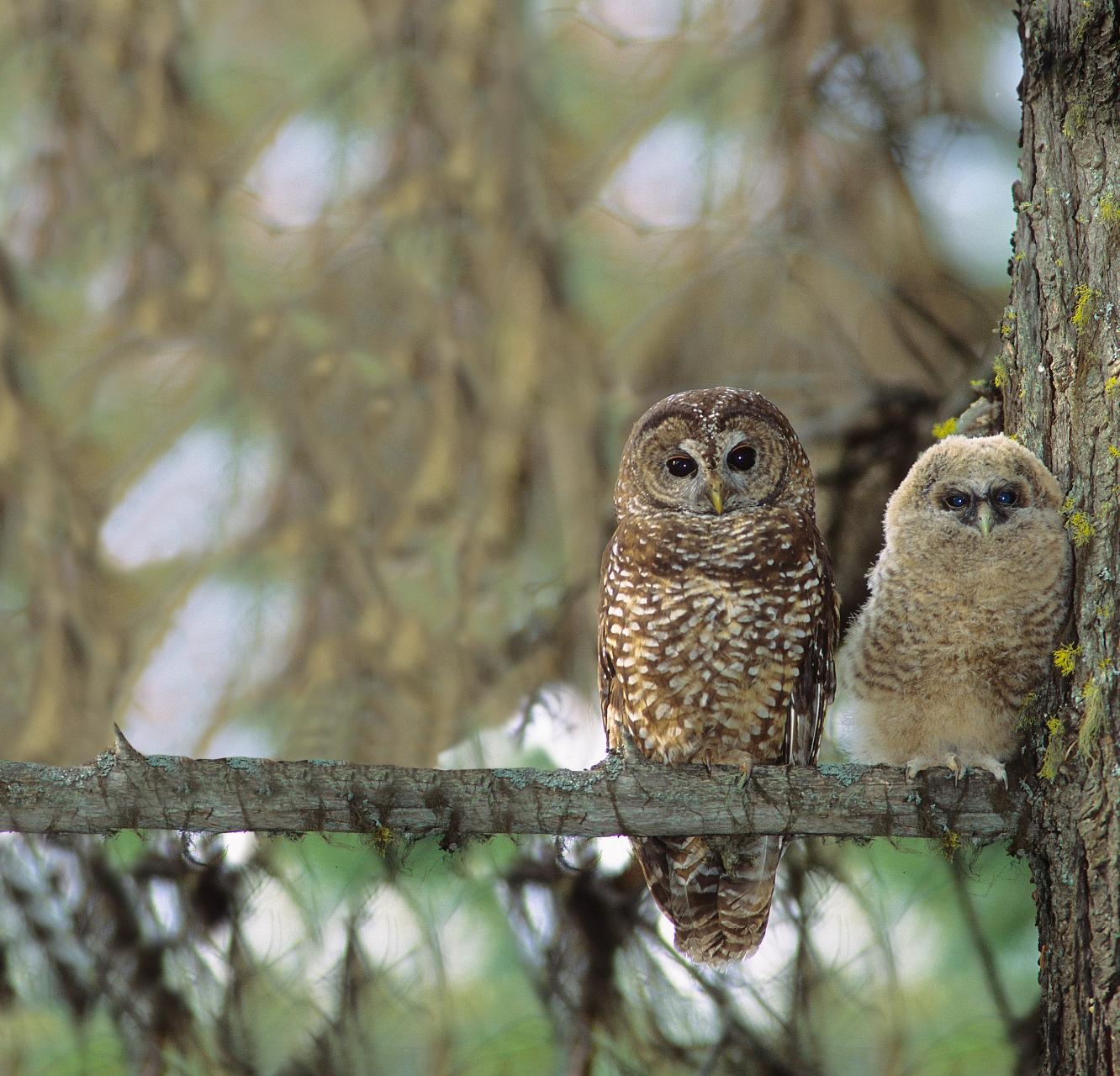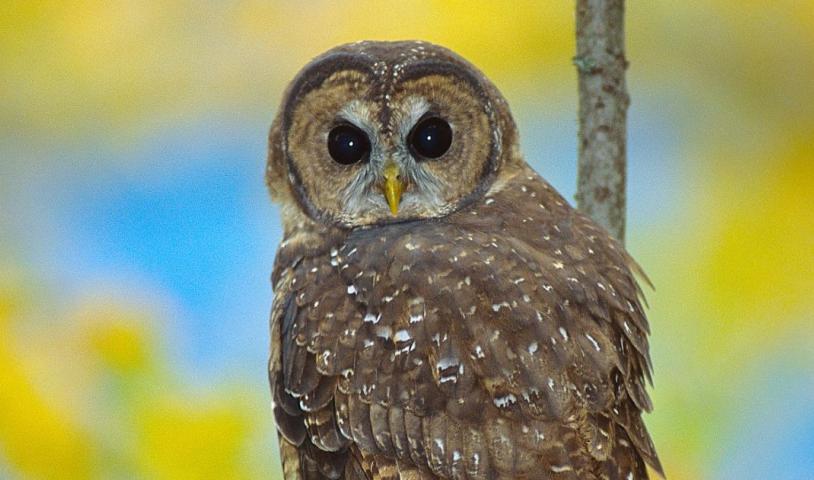In BC, to keep one owl alive, another species must die
Sunday, January 27, 2013
Photo: Gwen Barlee of the Wilderness Committee
The British Columbia government has approved the shooting one species of owl in a last-ditch effort to save their endangered cousins, as the number of northern spotted owls continues to decline decades after they became the mascot of the “War in the Woods” over old-growth logging.
Northern spotted owls are on the brink of extinction in Canada, with only 10 birds remaining in the wild in southwestern B.C., according to some estimates.
The situation is so grave that over the past five years the provincial Forests and Lands Ministry has relocated 73 and authorized the shooting of 39 barred owls, the larger and more aggressive bird encroaching on the spotted owls’ limited habitat.
“Barred owls have invaded all spotted owl habitat,” said Ian Blackburn, the provincial government’s spotted owl recovery co-ordinator.
Relocation or elimination of barred owls is limited to a five-kilometre radius around areas where spotted owls have recently been confirmed, or areas being considered for reintroduction from a captive breeding program.
“Without this, it is likely that the wild population would be extirpated before we have sufficient captive-bred young to release – which would significantly hurt the chances of survival for the released birds,” Mr. Blackburn said in an e-mail.
Preliminary results show that up to 13 new spotted owls – eight adult and five young – were discovered within nine of 17 sites where barred owl removals occurred, he said.
“While none of us like the idea of killing [barred owls], we all agreed that if the goal continues to be the recovery of the [spotted owl], then it is a necessary and potentially effective tool,” says a 2011 internal e-mail between members of the provincial spotted owls recovery team, obtained by the conservation group the Wilderness Committee using freedom of information legislation.
Due largely to loss of habitat from old-growth logging, spotted owls were already on the brink of extinction by the 1980s when they became the mascot of the environmental movement.
As loggers and protesters clashed in the woods, the wide-eyed bird of prey was listed as endangered by the Committee on the Status of Endangered Wildlife in 1986 and red-listed in B.C. in 1989. A provincial management plan was adopted in 1997, but the province has no standalone endangered species legislation that mandates conservation measures.
The province designated special management areas under a 2006 management plan and implemented the first-ever captive breeding program for spotted owls. Mr. Blackburn said the program appears to be helping the few remaining birds in the wild. “If we can succeed with captive-breeding, we have a shot,” he said in an e-mail.
“The long-term hope is that if we create sufficient suitable habitat and flood it with captive-bred birds, they may be able to withstand/adapt to the competition from [barred owls].”
Barred owls are more adaptable than spotted owls, and compete for space and prey, according to the federal species at risk listing for the birds. They also prey directly on spotted owls and breed with them to produce a hybrid species.
“They basically push the spotteds out,” said Rob Hope of the Orphaned Wildlife Rehabilitation Centre in Delta, B.C. “They’re trying to protect what spotteds are left … trying to control where the nesting pairs are to give them a chance.”
Some view the cull as a desperate measure that may be too little, too late. “This is what happens when you drive a species right to the edge of extinction and you don’t want to do the right thing, which is put aside the habitat it needs to recover,” said Gwen Barlee of the Wilderness Committee.
The northern spotted owl can be found along the Pacific coast from Mexico to Washington state, but in Canada, it is found only in southwestern B.C. A century ago, there were an estimated 500 breeding pairs in B.C. “Without increased habitat protection and direct augmentation of the population, the caurina subspecies of the spotted owl cannot avoid being extirpated; if present trends continue, extirpation will occur by 2012,” said the SARA listing.
Yet Mr. Blackburn remains hopeful that the owls can be brought back. Some 300,000 hectares have been designated protected spotted owl habitat, and a captive breeding program is creating a population that can be released back into the wild – possibly starting this year. There are 13 owls in the captive breeding program at the Mountain View facility in Langley, B.C., where Blackburn said three incubated eggs successfully hatched.
“Unfortunately, only one chick survived,” Mr. Blackburn said. “He has since been paired with a potential mate for breeding this year.”
There are two more owls in a captive breeding program at the Woodland Park Zoo in Seattle.
“The captive breeding program hasn’t been very successful,” Ms. Barlee said, adding that internal documents obtained by the Wilderness Committee indicated three out 10 owls captured for the program died in captivity.
The No. 1 reason for their state is loss of old-growth habitat, and releasing captive-bred birds back into unsustainable habitat is futile, she said.
Documents obtained by the Wilderness Committee repeatedly mention that much of the land the government set aside and protected from logging – to much fanfare – was not suitable terrain for the owls, but Mr. Blackburn said habitat “is slowly increasing in total suitability.”
Ms. Barlee fears it’s too late – for the spotted owl and other species.
“It’s kind of scary because in 20 years we might look back and say, ‘What happened?’ We had something that was the envy of the world and because of short-term thinking and short-term economic growth over a healthy environment, we’ve lost something very special.”
This CP article also appeared in several other publications, including the Vancouver Sun, Ottawa Citizen, CBC News and the Huffington Post.





